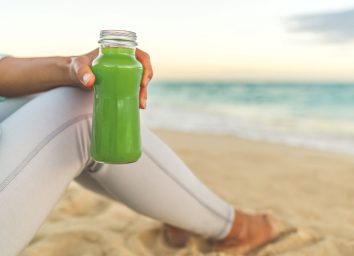How to Hack Your Metabolism for Weight Loss

There's so much stuff we wish we could tell you. Did Tony Soprano die in the final episode of The Sopranos, or did he happily finish off that plate of onion rings and simply go home? Did we really walk on the moon? Who was Jack the Ripper? How much did Tom Brady really know about Deflategate? On top of that long list, we would add, simply: "your metabolism."
Seriously. We wish that we were indeed some sort of metabolism whisperer who could look you directly in the eye and say, "Your TEE is 2,100 calories. That's what you burn every day."
While we don't necessarily have that power, you do! (Remember, you're the hero of this weight-loss journey—we're merely your guide.)
If you really wish to pinpoint your metabolism to the exact calorie burn, you can visit a doctor's office or training center that is equipped with indirect calorimetry equipment, a breathalyzer-like system will give you a more accurate rate. Though we would never dissuade you from getting the most accurate information as possible, we can tell you that if you have a pencil, a piece of paper, and a calculator (optional), you have pretty much all of the tools to get at least your basal metabolic rate, or BMR, which is an excellent start in understanding roughly how much you should be eating. (And while you're making healthier changes, be sure to try out the 21 Best Healthy Cooking Hacks of All Time!)
Now, if you're wondering: Why is ballparking one's rate good enough? Don't I deserve better? Don't I want to know my exact rate so that I don't overindulge and eat too much? Well, you'd be right. You deserve better.
But here's the thing: Your diet is more about the quality of foods you're eating and less about the sheer quantity in calories. At the end of the day, calories don't equal nutrients, and we care more about you eating more of the better, fat-melting ingredients in certain foods. You'll see the risk of overeating is severely diminished. You won't be stuffing yourself with bags of greasy potato chips and other cheap eats that will leave you craving even more afterward. You'll find that you're curbing your hunger—not increasing it. After all, you can easily overeat apple-flavored candy all you want and watch your waist balloon in size—but try doing the same thing with apples themselves.
Not so easy, right?
That said, knowing your basal metabolic rate is a great start and a solid indicator of generally how much you should be eating on a daily basis. All you have to do is calculate it in just seconds on the back of an envelope using the widely accepted Mifflin-St. Jeor equation.
Here's some easy algebra:
For Men:
10 x your weight (in kilograms) + 6.25 x your height (in centimeters) – 5 x your age (in years + 5).
For Women:
The equation is the same, but instead of subtracting 5, subtract 161 at the end.
That's it—all it takes to calculate your metabolism!
If you're a 30-year-old woman who stands five foot six and weighs 140 pounds, your BMR is 1,371.75.
But remember: That's your BMR. If all you did was lie on the couch watching Netflix all day, you'd be set. So your next order of business is to pile on more calories from there, all of the calories you burn in other aspects of your life.
Let's say you're a runner and you're banging out three miles a day—that's another 300-plus calories (assuming you run nine-minute miles). Very roughly speaking—total ballpark here—you could realistically add another 500 calories for digesting your food, moving around, and cooling down from your run.
If that's the case, you'd be burning upward of 2,200 calories in a typical day. What does that look like? Well, this:
- Three scrambled eggs with peppers and onions
- Cup of Greek yogurt
- Baked salmon and asparagus
- Peanut butter and celery snack
- Chicken, quinoa, and green beans with olive oil
Sounds pretty solid, doesn't it? And if you're looking for more tips, here's how you can fire up your metabolism and lose weight the smart way.








